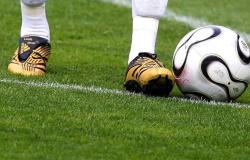The 7.4-magnitude earthquake in Taiwan, the most severe seismic event the island has suffered in a quarter of a century, has caused multiple deaths and left buildings leaning at dramatic angles.
But although at least nine people have died and many more are missing, Taiwan has not experienced the scale of destruction suffered by some other nations from severe seismic events.
For example, more than 53,000 people were killed in Turkey and well over 5,000 died in northern Syria in a series of three major earthquakes in February last year.
These earthquakes, which had magnitudes of 7.8, 7.5 and 6.4, according to the Red Cross, caused at least 37,066 buildings in Turkey to collapse and heavily damaged a further 200,000.
Quality control
Taiwan hit by the most powerful earthquake in 25 years
The extent to which buildings are constructed to be earthquake-resistant is, researchers say, a key factor determining the outcome of a quake.
Taiwan, California, Japan and Italy, for example, are regarded as having buildings that are constructed to cope with earthquakes.
“Buildings kill people, not earthquakes,” Dr Raffaele De Risi, a senior lecturer in the School of Civil, Aerospace and Design Engineering at the University of Bristol, told The National.
“When you have a lot of earthquakes you tend to develop better building codes. If you’re compliant, your buildings tend to fail less.”
Building codes govern the standards to which buildings must be designed and constructed – and in countries that experience significant seismic activity, they play a central role in ensuring that homes, offices, hospitals, schools and the like are able to cope with earthquakes.
Dr De Risi said both Taiwan and Turkey had “very good building codes right now”, but, of the two, Turkey may have more buildings constructed before the current, stringent codes were introduced and that have not been retrofitted to comply. Retrofitting buildings can, he said, be “very expensive”.
“If you have an old building, built according to old codes, unfortunately this will not reflect modern standards related to the most recent scientific findings,” he said.
Buildings kill people, not earthquakes
Dr Raffaele De Risi
Also, in some countries there may not be good adherence to building codes.
“The control of what’s been built is important – it’s important that constructions are compliant with blueprints,” Dr De Risi said.
Many buildings in Taiwan appear to be constructed from reinforced concrete, Konstantinos Tsavdaridis, professor of structural engineering at City, University of London, said.
“The classic design of these buildings in seismically active areas is that they use quite a lot of concrete, very dense columns, and the most important buildings have rubber bearings,” he said.
Rubber bearings typically consist of layers of rubber and steel plates that act as seismic isolators or base isolators, separating the building’s superstructure from its foundations.
These rubber bearings absorb much of the force that a building is exposed to by an earthquake and so protect the main structure.
In promotional material for a “seismic isolating rubber bearing”, the company Bridgestone says that the system provides vertical rigidity, so the isolator supports the weight of the structure, while also having horizontal flexibility, which “converts destructive horizontal shaking into gentle movement”.
Soft grounding
Prof Tsavdaridis is a visiting professor in Japan and he said many buildings there had “very dense, closely spaced columns, short spans” or had base isolators.
Taiwan’s earthquake has left some buildings leaning heavily, which may have been caused by a “soft storey” on the ground floor.
In these buildings, the upper floors appear mostly unaffected, but the ground floor has at least partially collapsed because instead of solid walls, it has, for example, an atrium or retail units with large glass windows.
“It doesn’t fall down but it’s leaning at a 45-degree angle,” Prof Tsavdaridis said. “The ground floor columns don’t have infill. You don’t have load-bearing walls to support them. It’s usually the case in the upper [storeys] you have them.”
Sometimes even buildings constructed to be resistant to earthquakes can suffer significantly because of seismic activity, Dr De Risi said, such as when there is “liquefaction” of the soil.
“The building can be designed to the highest standards but in that case it may still have issues,” he said. “Although the building is still there it may have an unwanted configuration.”
Early-warning systems
Aside from the buildings themselves, early-warning systems and the behavior of the population can affect how many lives are lost in an earthquake.
Japan, for example, has a “state-of-the-art” system for detecting tremors and relaying warnings to the public, Prof Tsavdaridis said.
The combination of early warnings and a population that is well versed in what to do in an earthquake can, he said, “significantly change the outcome”.
Japan has earthquake drills in schools, so if there is a tremor children know to shelter under their desks, protecting their heads.
Some nations have high expectations of buildings’ resilience to earthquakes.
Polling by the New Zealand Society for Earthquake Engineers and New Zealand’s Earthquake Commission, reported by local media, showed a desire for buildings to not just preserve life, but also remain functional in the event of an earthquake.
Attitudes appear to have been shaped, analysts said, by events such as the 2011 earthquake in the city of Christchurch, which killed 185 people.
Thousands of buildings had to be torn down and rebuilt and the city center was roped off for two years.
Updated: April 03, 2024, 5:55 PM
Tags: Taiwans earthquake caused damage
-





